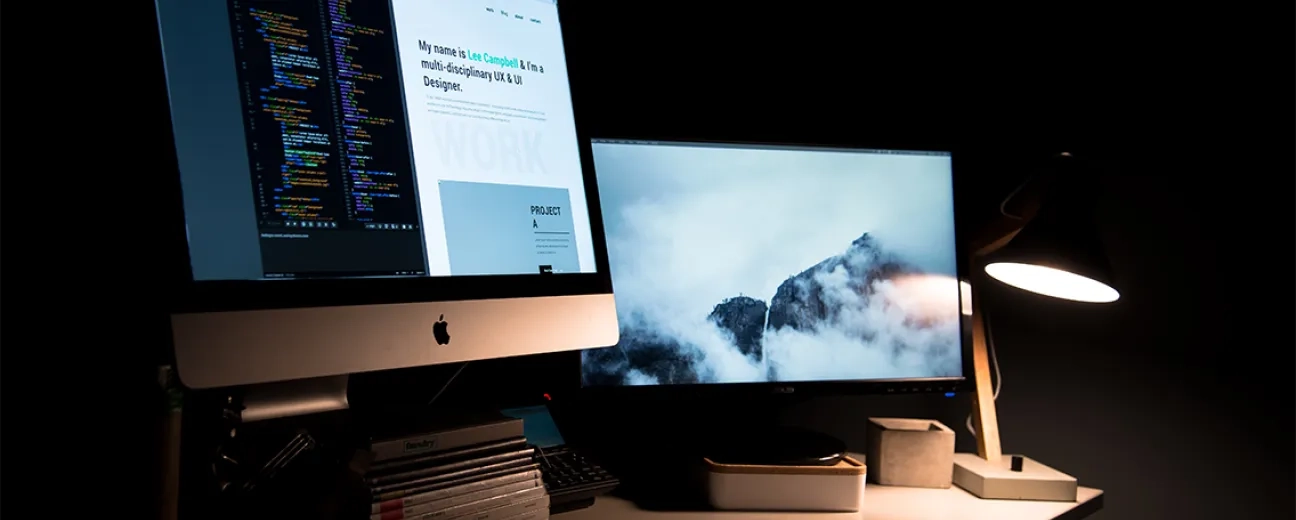UX/UI Design Workflows Are Evolving - Is Your Front-End Ready?

Design is no longer just about aesthetics - it's about intelligence, empathy, and adaptability.
In 2025, UX/UI design workflows and front-end development environments are undergoing a seismic shift. Fueled by AI, accessibility mandates, and immersive technologies, the way we build digital experiences is being rewritten. For businesses, this means one thing: adapt or fall behind.
Why UX/UI Design Workflows Matter More Than Ever
UX/UI isn't just a design department concern anymore - it's a strategic differentiator. As users demand seamless, personalized, and inclusive experiences, design workflows must evolve to meet those expectations. And it's not just about tools - it's about how teams collaborate, iterate, and deploy across platforms.
According to Nielsen Norman Group, AI is now deeply embedded in tools like Figma and Dovetail, enabling faster prototyping, smarter user research, and even autonomous design suggestions. This shift is transforming how designers and developers work together, blurring traditional boundaries.
But here's the question: is your current workflow built for this level of agility?
AI-Powered Design: From Assistant to Collaborator
AI is no longer a novelty in UX/UI - it’s a core collaborator. Tools now leverage domain-specific language models to generate layouts, suggest accessibility improvements, and even simulate user flows. This not only accelerates design cycles but also enhances consistency and compliance.
As highlighted in The State of UX in 2025, AI-driven workflows are redefining roles. Designers are becoming curators of machine-generated options, while developers integrate these outputs into dynamic front-end environments. The result? Faster MVPs, more iterations, and tighter feedback loops.
- AI-generated wireframes and prototypes
- Automated accessibility checks
- Predictive user behavior modeling
Imagine launching a fully responsive prototype in hours, not weeks—what would that do for your roadmap?
Front-End Development Setups: Built for Flexibility
Modern front-end environments must support rapid iteration, cross-platform deployment, and seamless integration with design systems. Gone are the days of static handoffs—today’s workflows demand real-time collaboration between design and code.
Frameworks like Next.js, Vite, and Tailwind CSS are enabling modular, scalable architectures. But the real game-changer is how these tools integrate with design platforms. With Figma-to-code plugins and headless CMSs, front-end teams can now build dynamic interfaces that evolve with user needs.
At SoftXPro, we’ve helped clients streamline their custom website design processes by aligning design systems with component libraries - reducing rework and boosting consistency across platforms.
Is your front-end setup empowering your team - or slowing them down?
Immersive Interfaces and Microinteractions
Users today expect more than static screens - they want immersive, intuitive, and emotionally resonant experiences. According to UX Studio, trends like interactive 3D objects, progressive blur, and modern skeuomorphism are reshaping how users engage with digital products.
Microinteractions - those subtle animations and feedback cues - are no longer optional. They guide users, reduce friction, and build trust. Whether it’s a loading animation that reassures or a swipe gesture that delights, these details matter.
And with the rise of AR/VR and metaverse-ready interfaces, front-end teams must now think spatially. As noted by Caltech Bootcamps, immersive design is becoming a core competency - not a fringe experiment.
What story is your interface telling - and how does it make users feel?
Accessibility and Ethical Design: Non-Negotiables
Accessibility is no longer a compliance checkbox - it’s a competitive advantage. Inclusive design ensures that your product reaches the widest possible audience, including users with disabilities, aging populations, and those using assistive technologies.
Modern front-end environments must bake accessibility into every component. Semantic HTML, ARIA roles, color contrast checks, and keyboard navigation are table stakes. But ethical design goes further - considering data privacy, cognitive load, and emotional impact.
As emphasized in DesignStudioUIUX, personalization via AI must be balanced with transparency and user control. Ethical UX is about empowering users—not manipulating them.
Are your design choices inclusive by default - or reactive afterthoughts?
Cross-Platform UX: One Experience, Many Devices
Users don’t think in platforms - they think in experiences. Whether on mobile, desktop, tablet, or wearable, they expect continuity. This demands a unified design language and responsive front-end architecture.
Cross-platform UX is about more than screen sizes - it’s about context. A user checking a dashboard on their smartwatch has different needs than one exploring it on a desktop. Design systems must adapt accordingly, and front-end environments must support that flexibility.
At SoftXPro, we’ve implemented cross-platform strategies for clients in fintech, healthcare, and e-commerce - ensuring that every touchpoint feels native, intuitive, and consistent. Explore our project portfolio to see how we bring this to life.
How seamless is your user journey across devices?
Conclusion: Designing for What’s Next
The future of UX/UI design and front-end development isn’t coming - it’s already here. AI is your co-designer. Accessibility is your baseline. Immersive, ethical, and adaptive interfaces are your new standard. To stay competitive, your workflows must evolve with the tools, the trends, and - most importantly - the users.
Whether you're building a new platform or modernizing an existing one, now is the time to rethink your design and development stack.
Want to future-proof your UX/UI workflows? Book a free strategy call with our team today.
